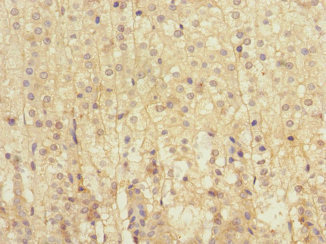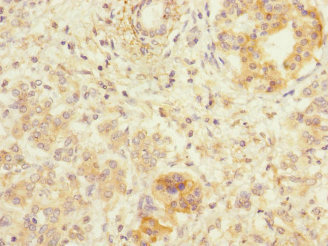
Immunohistochemistry of paraffin-embedded human adrenal gland tissue using CSB-PA013099ESR2HU at dilution of 1:100
LRP4 Antibody
CSB-PA013099ESR2HU
ApplicationsELISA, ImmunoHistoChemistry
Product group Antibodies
ReactivityHuman
TargetLRP4
Overview
- SupplierCusabio
- Product NameLRP4 Antibody
- Delivery Days Customer20
- ApplicationsELISA, ImmunoHistoChemistry
- CertificationResearch Use Only
- ClonalityPolyclonal
- ConjugateUnconjugated
- Gene ID4038
- Target nameLRP4
- Target descriptionLDL receptor related protein 4
- Target synonymsCLSS; CMS17; low-density lipoprotein receptor-related protein 4; LRP10; LRP-4; MEGF7; multiple epidermal growth factor-like domains 7; SOST2
- HostRabbit
- IsotypeIgG
- Protein IDO75096
- Protein NameLow-density lipoprotein receptor-related protein 4
- Scientific DescriptionMediates SOST-dependent inhibition of bone formation. Functions as a specific facilitator of SOST-mediated inhibition of Wnt signaling. Plays a key role in the formation and the maintenance of the neuromuscular junction (NMJ), the synapse between motor neuron and skeletal muscle. Directly binds AGRIN and recruits it to the MUSK signaling complex. Mediates the AGRIN-induced phosphorylation of MUSK, the kinase of the complex. The activation of MUSK in myotubes induces the formation of NMJ by regulating different processes including the transcription of specific genes and the clustering of AChR in the postsynaptic membrane. Alternatively, may be involved in the negative regulation of the canonical Wnt signaling pathway, being able to antagonize the LRP6-mediated activation of this pathway. More generally, has been proposed to function as a cell surface endocytic receptor binding and internalizing extracellular ligands for degradation by lysosomes.
- ReactivityHuman
- Storage Instruction-20°C or -80°C
- UNSPSC12352203

